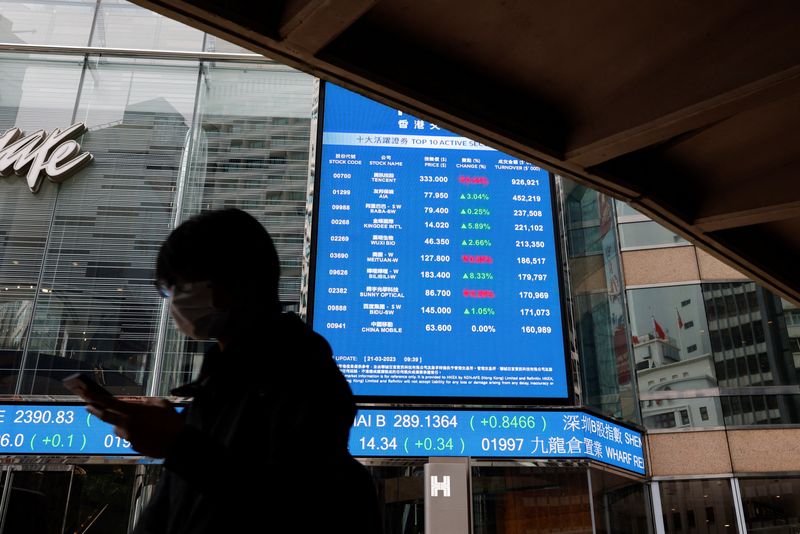By Jamie McGeever
(Reuters) – A look at the day ahead in Asian markets.
Asian markets look set for another torrid session on Thursday, with investors still reeling from the China-fueled weakness and strong rise in global bond yields the previous day.
Highlights on the regional economic calendar will likely be Japanese machinery orders, New Zealand manufacturing PMI, Australian unemployment, and possibly the latest snapshot of Chinese foreign direct investment.
Of all those indicators, China’s FDI would be the most significant, especially in light of the ‘data dump’ from Beijing on Wednesday and distinctly lukewarm reaction in Chinese asset markets that followed.
The economic numbers for December were mixed – industrial production was a beat, retail sales a miss – and the official GDP figures showed that the economy grew 5.2% last year.
But that’s ‘real’ growth. Strip out deflation, and nominal growth was just 4.2%, according to Deutsche Bank’s Jim Reid. Excluding the pandemic-hit growth of 2.7% in 2020, it is the lowest annual number since 1976, the year of Chairman Mao Zedong’s death.
As Reid notes, nominal GDP is important to debt ratios, property markets and earnings. “So this would help explain the continued weakness in Chinese equities and property markets.”
China’s CSI 300 index slumped more than 2% on Wednesday, its biggest fall since August. Markets across the region also fell – the MSCI Asia Pacific ex-Japan index had its worst day in six months and is now down almost 4% over the last two days, its biggest two-day slump since October, 2022.
China bulls seeking solace in the long-term outlook would not have welcomed the latest population figures from Beijing on Wednesday either. The birth rate fell to a record low last year and the population dropped by 2.08 million to 1.409 billion.
This was the second annual decline, following the 850,000 in 2022, the first since 1961 during the Great Famine of the Mao Zedong era. A falling population is a headwind to long-term potential growth.
More broadly, global markets this week are on the defensive, pounded by the sharp rise in bond yields as traders rein in some of the extreme dovishness priced into the 2024 interest rate outlook.
Whether driven be surprisingly strong economic activity, as is the case in the US, or surprisingly high inflation, as shown in Canada and Britain, bond yields are rising and rate cut expectations are ebbing.
Emerging market stocks are having their worst start to a calendar year since 2016, and the yawning performance gap between emerging Asia and the rest of the world in recent years appears to be only widening.
Even the bulled-up Nikkei is feeling the strain. It fell on Wednesday for a second day, although it was probably only a matter of time before a wave of profit-taking crashed in.
Here are key developments that could provide more direction to markets on Thursday:
– Japan machinery orders (November)
– Australia unemployment (December)
– China FDI (December)
(By Jamie McGeever)
